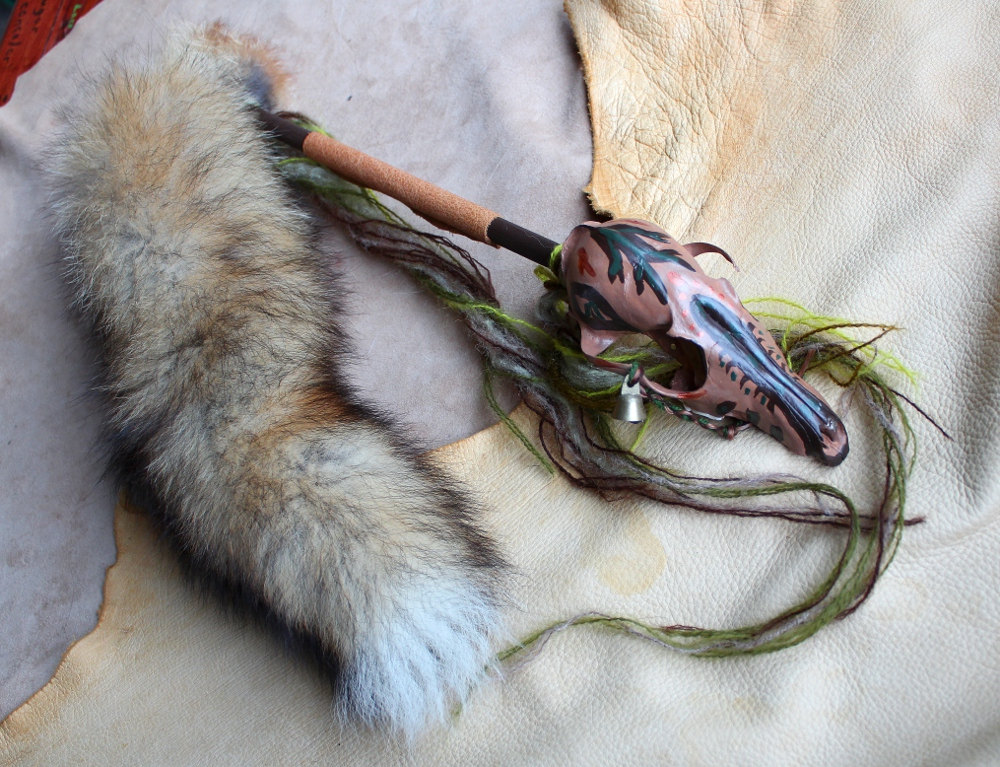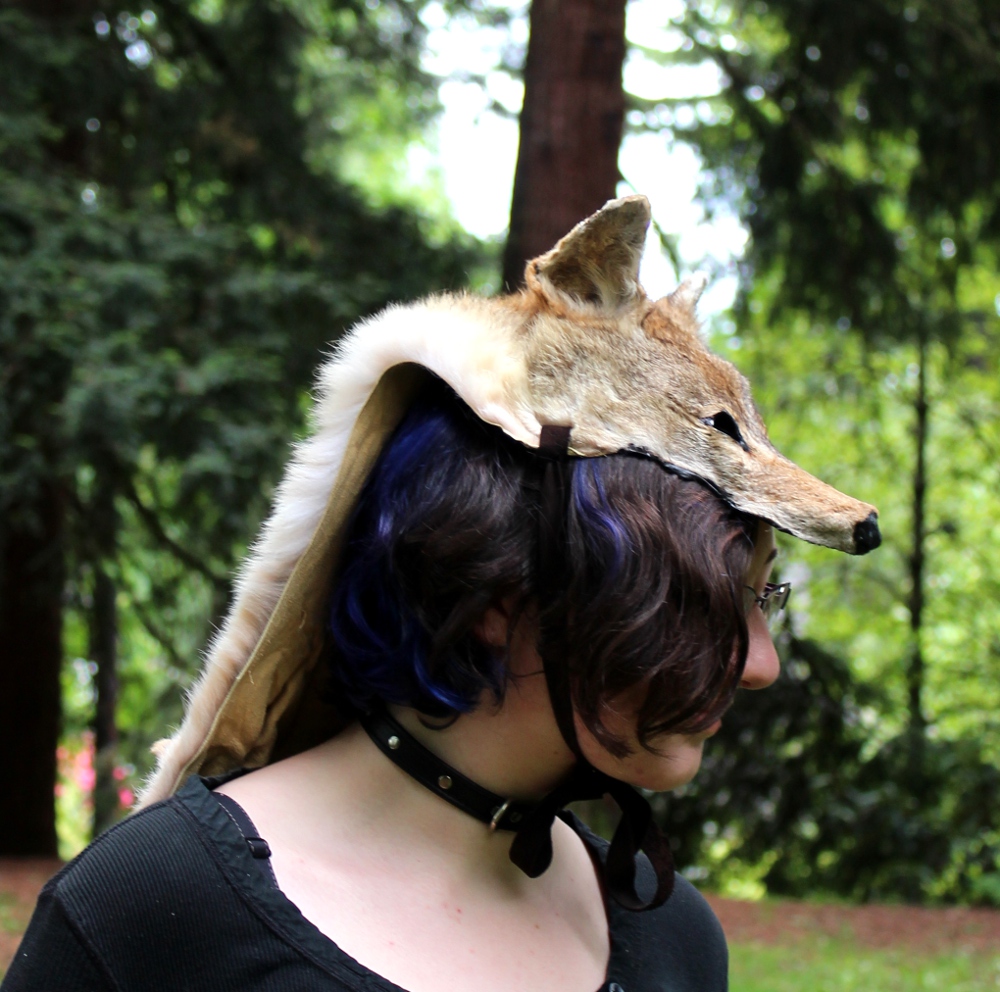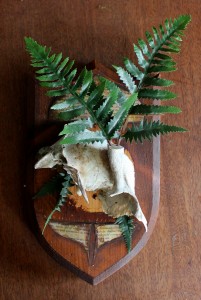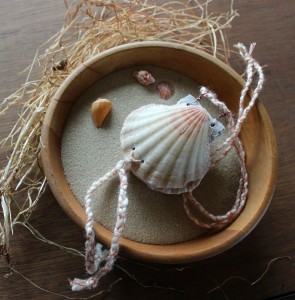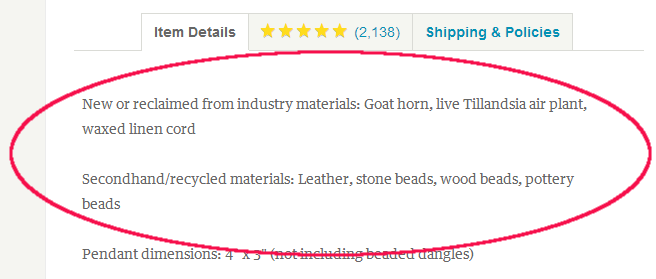I am an animal lover, a sometimes pet owner, and an environmentalist dedicated to protecting wildlife and their habitats. I am also an omnivore, a hide and bone artist, and engaged in a fierce war with the ants that get into my apartment. A large portion of my spiritual path involves animal totems, and every day I consume some portion of their physical counterparts, whether in food or medicine or other products.
I’ve also spent years detangling the inherent contradictions in these relationships to my fellow animals. I’ve toured the free range ranch where I get a lot of my meat, and I’ve watched the (probably staged) videos put out by animal rights groups on fur farming. I periodically assess my personal ethics with regards to the animal remains I incorporate into my artwork, and I research environmental groups and their track records before donating a portion of the money made from that art to them. I’ve played with baby teacup pigs, and then gone home and eaten bacon, and considered how the life of one pig was different from another. In short, I’ve done a lot of thinking about the animals in my life.
So has Hal Herzog, anthrozoologist and the author of the 2010 title Some We Love, Some We Hate, Some We Eat. The cover features three common animals in the American landscape to go with the tripartite title: a puppy, a rat, and a pig. The opening question, then, even before you open the book, is why do we eat pigs and not dogs, why do only a few of us keep pigs and rats as pests, and why do we become incensed about some people in Asia eating dogs specifically bred for meat while ignoring the plight of pigs in factory farm conditions?
Some people already have their minds made up. “That’s just the way it is here”, they might say. Or “Well, it’s wrong, we shouldn’t eat or exploit any animals”. If you go into this book with an absolutist perspective, you’re likely to miss out on a lot of the important questions that the book raises about the sometimes conflicting, always highly personal, approaches we have to nonhuman animals. There are no easy answers, and that’s evident from the start.
The bulk of the book, eight chapters worth, is dedicated simply to exploring the many areas of relationship and contradiction we engage in with animals each day. Herzog looks at how we treat our pets, compares it to historical pet ownership, and questions the motives of those who put their toy poodles in designer sweaters. There’s a highly enlightening—and controversial–chapter that delves into cockfighting, and the comparison of the life of a gamecock to that of a commercially bred, raised and slaughtered broiler hen may have you questioning our priorities as a culture. Another section of the book goes into detail regarding research animals, especially mice, and we find that the research lab is full of more human responses to the test subjects than you might expect. It does get a little repetitive, with chapter after chapter of examples of “Yes, we have really mixed feelings about animals”. But read all the way through: it’s a really important setup for the last part of the book, and you don’t want to skip the middle of the story.
Herzog reserves the closest thing to a hard conclusion in the last two chapters. Chapter nine, “The Cats in Our Houses, the Cows on Our Plates”, directly addresses the hypocrisy on display in the previous chapters. The author points out that yes, we’re almost all hypocrites to one degree or another–and most of us don’t let it get to us. If pressed, we may explain at least in vague terms why we’ll step on a spider but not a caterpillar, but even the most intensive self-searching often comes to a dead end of “It’s just the way I do things”. The issue of animal rights is compared to religion, with a small handful of moral absolutists taking the part of “born-agains” and other fundamentalists, and the rest deciding what of the overarching theology to take and what to leave. This isn’t presented as a condemnation of anyone who isn’t an absolutist; in fact, Herzog brings up some of the destructive elements of absolutism, from the self-inflicted fatigue of activist burnout to the criminal acts of terrorism enacted by a tiny number of extremists. The conclusion of the chapter is that “moral consistency is elusive, if not impossible, in the real world” (262), which segues into the final chapter dealing with real people, rather than moral abstracts, as models of behavior toward animals.
In this last part, Herzog visits two different places where people are actively trying to save animals. On the one hand is Best Friends Animal Society, a decades-old animal sanctuary in Utah where all the animals are allowed to live out comfortable lives–even ants are gently moved outside. And then on the opposite side of the country is Judy Muzee, head of a group of volunteers who for years have been working to protect endangered loggerhead sea turtles, locating and preserving nests of eggs, and making sure the babies get to the water safely so they have a chance–however slight–of growing into adults. Muzee puts her animal-saving efforts into just one species and doesn’t necessarily treat all other animals with the same level of dedication (that would be a LOT of animals!) Best Friends considers any animal that comes through its doors to be on equal footing. Herzog does not choose one approach over another; rather, he presents them as two possible solutions a person may choose for the hypocrisy we have toward animals.
All in all, this is a valuable read, and I recommend it for everyone, though my fellow omnivores and hide and bone artists may find it especially helpful in articulating the whys of our choices. My only complaint was that I felt impatient for some sort of resolution or conclusion earlier in the book–but once I finished it, I understood why it took so long for Herzog to set the stage. It is not the be-all and end-all of answers on the debate over animal welfare and animal rights; if anything, it’s the antidote to the moral absolutism that often dominates that stage. And rather than bogging us down with guilt over “I’m not trying hard enough!” it invites us to be realistic with our own limitations, and to be honest about our hypocrisy–and then consciously act from there.
More information on the book, as well as ordering information, may be found on the author’s website.


